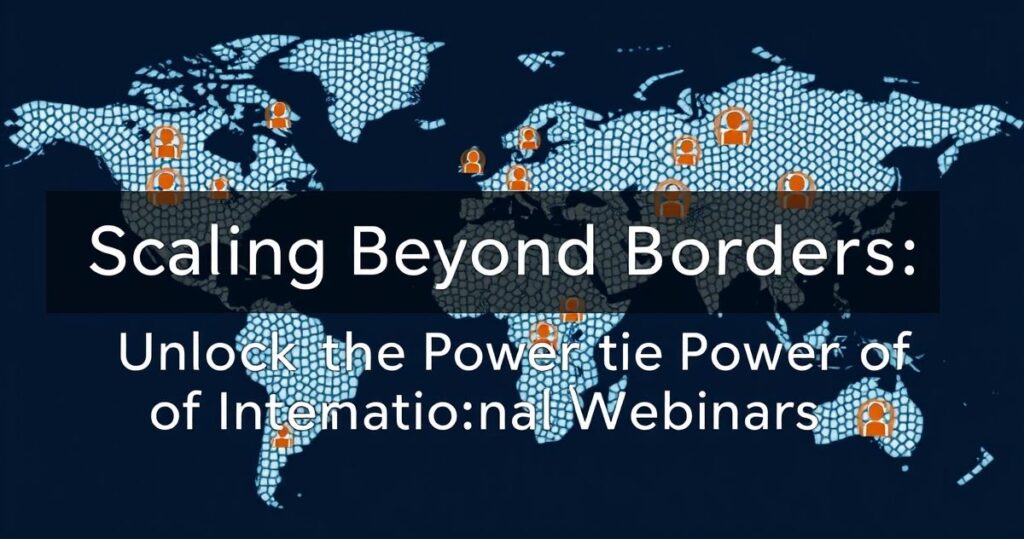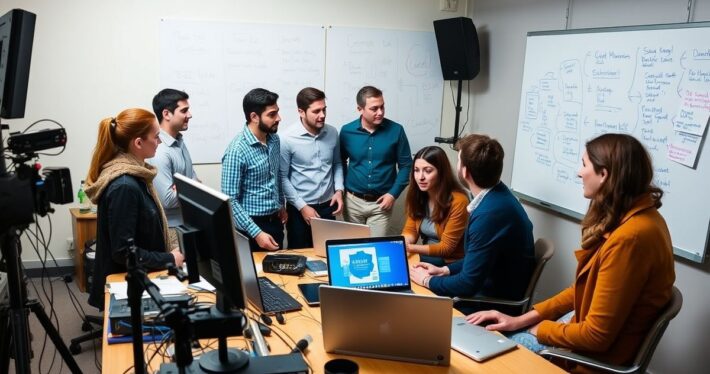Scaling beyond borders: How to organize international webinars.

Organizing international webinars is no longer just an option—it’s a necessity for businesses looking to scale beyond borders. But let’s be honest: hosting a webinar that resonates with a global audience isn’t as simple as hitting the “record” button. It requires thoughtful planning, cultural sensitivity, and the right tools to ensure your message lands effectively across different time zones, languages, and cultural contexts. Imagine this: You’ve spent weeks crafting the perfect presentation, only to realize your audience in Tokyo is tuning in at 3 AM, or your carefully chosen words don’t translate well in Spanish. Sound familiar? Don’t worry—this article will guide you through the process of organizing international webinars that engage, convert, and leave a lasting impression. #### Why International Webinars Matter Global webinars open doors to new markets, foster cross-cultural relationships, and position your brand as a thought leader on the world stage. But the benefits come with challenges—time zone juggling, language barriers, and cultural nuances can make or break your event. The key is to approach international webinars with a global mindset and the right tools. Now, here’s where it gets interesting. #### Step 1: Master the Art of Time Zone Management Scheduling a webinar that works for everyone is like trying to solve a Rubik’s Cube blindfolded. One misstep, and half your audience misses the event. But with a few strategies, you can navigate this challenge like a pro: – Use Time Zone Converters: Tools like World Time Buddy or Every Time Zone help you find a time slot that works for most of your audience. – Offer Multiple Sessions: If your audience is spread across continents, consider hosting the webinar at different times to accommodate everyone. – Record and Share: Always record your webinar and make it available on-demand for those who can’t attend live. #### Step 2: Localize Your Content for Cultural Relevance What works in New York might fall flat in New Delhi. Cultural adaptation isn’t just about translating your slides—it’s about understanding your audience’s values, preferences, and communication styles. Here’s how to do it: – Language Localization: Use professional translation services or AI-powered tools like DeepL to ensure your message is clear and culturally appropriate. – Cultural Sensitivity: Avoid idioms, slang, or humor that might not translate well. For example, a joke about “football” might confuse audiences in the U.S. (where it’s soccer) and Europe. – Local Examples: Incorporate case studies or anecdotes that resonate with specific regions. If you’re targeting a German audience, include examples from German businesses or industry trends. #### Step 3: Leverage the Right Webinar Tools Organizing a global webinar without the right tools is like trying to build a house without a hammer. Here are some must-have tools to streamline the process: – Slide Outline Creator: Design slides that balance education and engagement for diverse audiences. – Webinar Offer Builder: Structure your pricing and value propositions to appeal to international markets. – High-Value Bonus Brainstormer: Create bonuses that add real value, regardless of cultural differences. – Risk-Reversal Guarantee Generator: Build trust with global attendees by offering guarantees that make it easy to say “yes.” #### Step 4: Engage Your Global Audience Engagement is the secret sauce of any successful webinar—and it’s even more critical when your audience spans multiple countries. Here are some tips to keep your attendees hooked: – Polls and Q&A: Use interactive features to gather real-time feedback and address questions. – Breakout Rooms: Divide attendees into smaller groups for discussions or networking. – Multilingual Hosts: If possible, have hosts or moderators who speak the local language to make attendees feel more comfortable. #### Real-World Example: How Company X Scaled Globally Let’s take a look at how Company X, a SaaS provider, successfully organized an international webinar series: 1. Time Zone Strategy: They hosted three live sessions—one for Asia-Pacific, one for Europe, and one for the Americas. 2. Localized Content: They translated their slides into five languages and adapted examples to reflect regional trends. 3. Interactive Features: They used live polls and Q&A sessions to engage attendees. 4. Post-Webinar Follow-Up: They shared the recorded webinar with localized email campaigns, resulting in a 30% increase in conversions. #### Overcoming Challenges Organizing international webinars isn’t without its hurdles. Here are some common challenges and how to overcome them: – Tech Glitches: Test your platform thoroughly before the event, especially if you’re using webinars for global audiences for the first time. – Cultural Missteps: Partner with local experts to review your content for cultural sensitivity. – Low Attendance: Promote your webinar through localized marketing channels and partnerships. #### The Bottom Line Scaling your webinar strategy beyond borders is a game-changer for businesses looking to expand globally. By mastering time zone management, localizing your content, leveraging the right tools, and engaging your audience effectively, you can create webinars that resonate with audiences worldwide. So, are you ready to take your webinars global? With the right approach and tools, the world truly is your stage.



